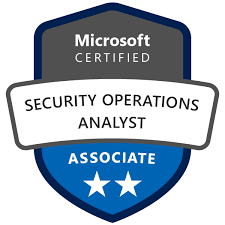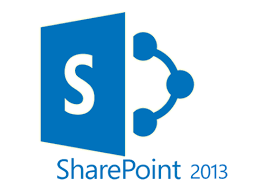Audience
The course is targeted at experienced IT professionals who are interested in learning how to install, configure, deploy, and manage SharePoint 2016 installations either in a data center or in the cloud. Students typically have more than one year of hands-on experience* with planning and maintaining SharePoint, and two years’ experience with other core technologies on which SharePoint depends, including Windows Server 2012 R2 or later, Internet Information Services (IIS), Microsoft SQL Server 2014 or later, Active Directory Domain Services (AD DS), and networking infrastructure services.
The minimally qualified candidate typically:
• Is an IT professional who plans, implements, and maintains a multi-server deployment of SharePoint 2016?
• Has a working knowledge of, and preferably hands-on experience with SharePoint Online?
• Has broad familiarity with SharePoint workloads.
• Has experience with business continuity management, including data backup, restoration, and high availability.
• Has experience with authentication and security technologies.
• Has experience with Windows PowerShell.
Prerequisites
Before attending this course, students must have knowledge of:
• Software management in a Windows Server 2012 or Windows Server 2012 R2 enterprise server environment.
• Deploying and managing applications natively, virtually, and in the cloud.
• Administering IIS.
• Configuring AD DS for use in authentication, authorization, and as a user store.
• Managing an application remotely by using Windows PowerShell 4.0.
• Managing databases and server roles in SQL Server.
• Connecting applications to SQL Server.
• Implementing claims-based security.
• Using Microsoft Hyper-V virtual machines.
An ideal candidate for this course must have at least one year of experience with deploying and administering multiple SharePoint 2013 farms across a large enterprise. Because many customers have not upgraded from SharePoint 2010, a candidate can also have at least two years of experience with SharePoint 2010. However, they also must understand the differences between SharePoint 2010 and SharePoint 2013, particularly in terms of hybridization.
Skills Gained
After completing this course, students will be able to:
• Describe the key features of SharePoint 2016.
• Design an information architecture for a SharePoint 2016 deployment.
• Design a logical architecture for a SharePoint 2016 deployment.
• Design the physical architecture for a SharePoint 2016 deployment.
• Install and configure SharePoint 2016.
• Create and configure web applications and site collections.
• Plan and configure service applications for a SharePoint 2016 deployment.
• Manage users and permissions, and secure content in a SharePoint 2016 deployment.
• Configure authentication in a SharePoint 2016 deployment.
• Configure platform and farm-level security in a SharePoint 2016 deployment.
• Manage information taxonomy in SharePoint web applications and site collections.
• Configure and manage user profiles and audiences.
• Configure and manage the search experience in SharePoint 2016.
• Monitor, maintain, and troubleshoot a SharePoint 2016 deployment.
Course outline
Module 1, “Introducing SharePoint 2016,” describes the structure and capabilities of a SharePoint environment, and the major changes for IT professionals in SharePoint 2016. This module also describes the options available for deploying SharePoint 2016.
Module 2, “Designing an information architecture,” describes how to gather business requirements, and the key elements of a successful information architecture project. This module also explains how to structure information within a SharePoint 2016 deployment to make it easy to find and retrieve.
Module 3, “Designing a logical architecture,” explains how to approach a logical architecture design and how to document it. It describes how to map business requirements to SharePoint 2016 architecture components, and outlines the options for documenting the logical architecture.
Module 4, “Designing a physical architecture,” describes the physical design requirements for SharePoint 2016, and the physical components necessary to fulfill the physical architecture design. It also explains the SharePoint farm topologies, and describes how to map a logical architecture design to a physical architecture design.
Module 5, “Installing and configuring SharePoint 2016,” explains how to install SharePoint 2016 in different topologies, script the installation, and configure a SharePoint 2016 environment. This module also explains how to configure the core farm-level settings in a SharePoint 2016 deployment.
Module 6, “Creating web applications and site collections,” explains how to create web applications in SharePoint 2016 and how to configure these applications. It also explains how to create and configure site collections in SharePoint 2016 and SharePoint Online.
Module 7, “Planning and configuring service applications,” describes the service application architecture in SharePoint 2016, and how to provision and manage service applications.
Module 8, “Managing users and permissions, and securing content,” describes the various authorization and security features available in SharePoint 2016 to help you maintain a secure SharePoint environment.
• Specifically, it explains how to manage users and permissions, and configure content access in SharePoint 2016.
Module 9, “Configuring authentication for SharePoint 2016,” explains about the SharePoint 2016 authentication infrastructure, and how to configure claims, providers, and identity federation for SharePoint 2016. It also explains how to configure server-to-server authentication for SharePoint 2016.
Module 10, “Securing a SharePoint 2016 deployment,” explains how to secure a SharePoint 2016 deployment at the platform level, and how to configure farm-level security settings for a SharePoint 2016 deployment.
Module 11, “Managing taxonomy,” explains how to create and manage content types and content-type propagation. Additionally, it explains how to implement managed metadata in SharePoint web applications and site collections. It also explains how to configure the managed metadata service application in SharePoint 2016.
Module 12, “Configuring user profiles,” explains how to configure the SharePoint User Profile service application, and how to manage user profiles and audiences. It also explains how to use the User Profile Service to configure and control importing of profile data, creating My Sites, managing audiences, and the users who can utilize these features.
Module 13, “Configuring Enterprise Search,” describes the Search service architecture, and explains how to configure the Search service in SharePoint 2016. It also explains how to manage the search experience in SharePoint 2016.
Module 14, “Monitoring and maintaining a SharePoint 2016 environment,” explains how to implement a monitoring plan for SharePoint 2016, and how to optimize the performance of a SharePoint 2016 deployment. It also explains how to plan for and configure SharePoint caching. Further, it explains how to identify and resolve problems in a SharePoint 2016 environment.
Schedule
Click on the following link to see the current Course Schedule
Our minimum class-size is 3 for this course.
If there are no scheduled dates for this course, it can be customized to suit the time and skill needs of clients and it can be held online, at a rented location or at your premises.
Click on the following link below to arrange for a custom course: Enquire about a course date







Reviews
There are no reviews yet.